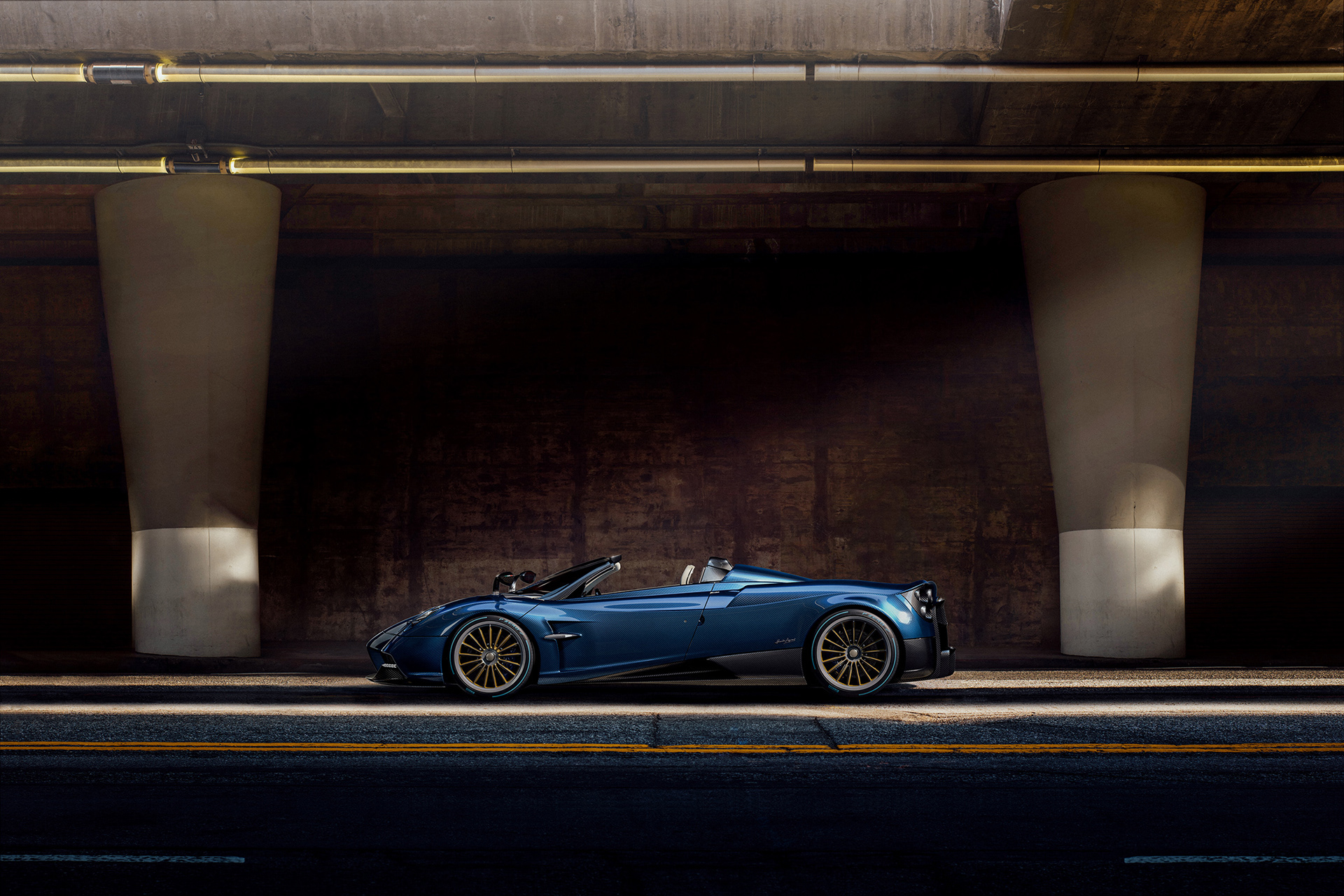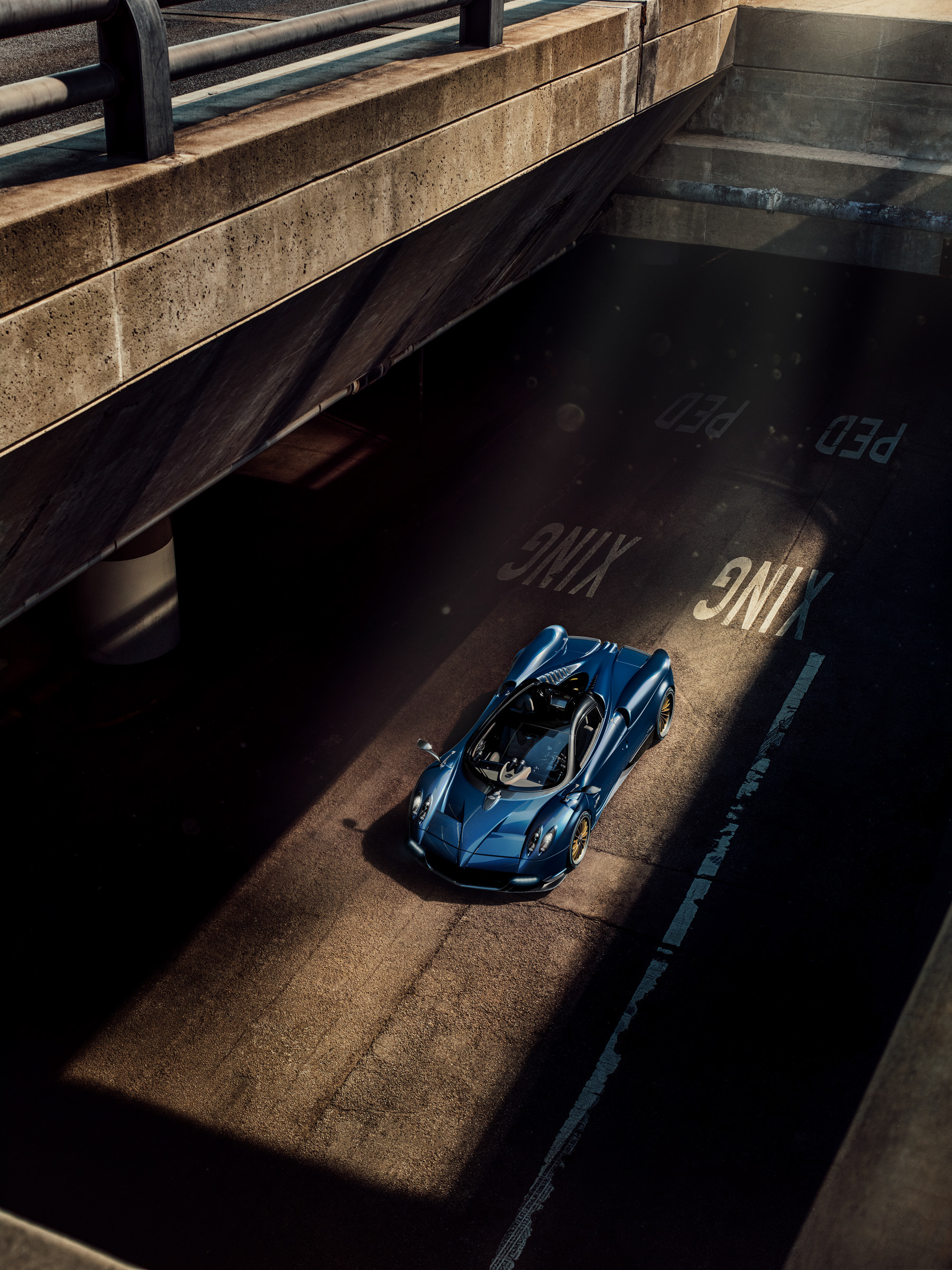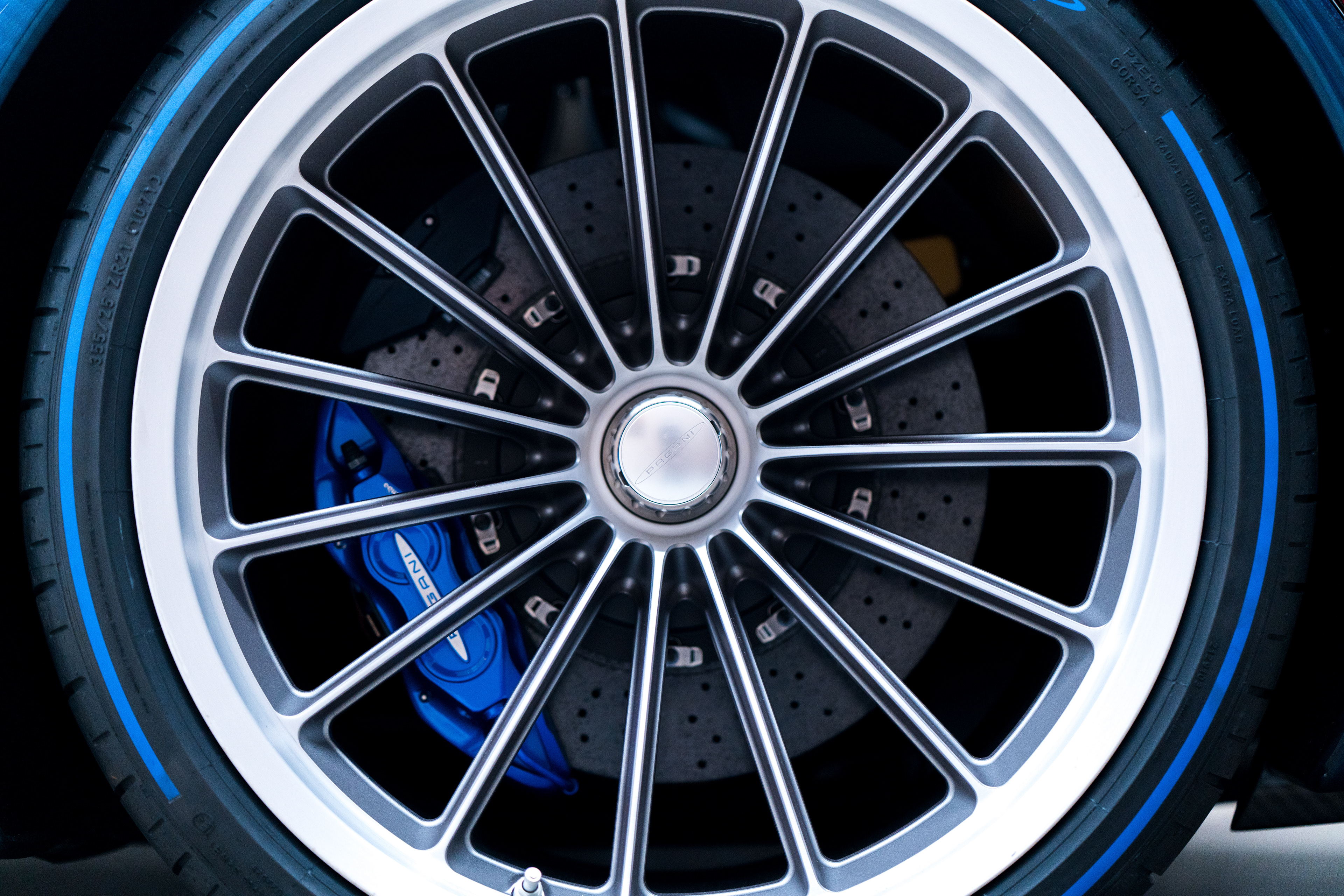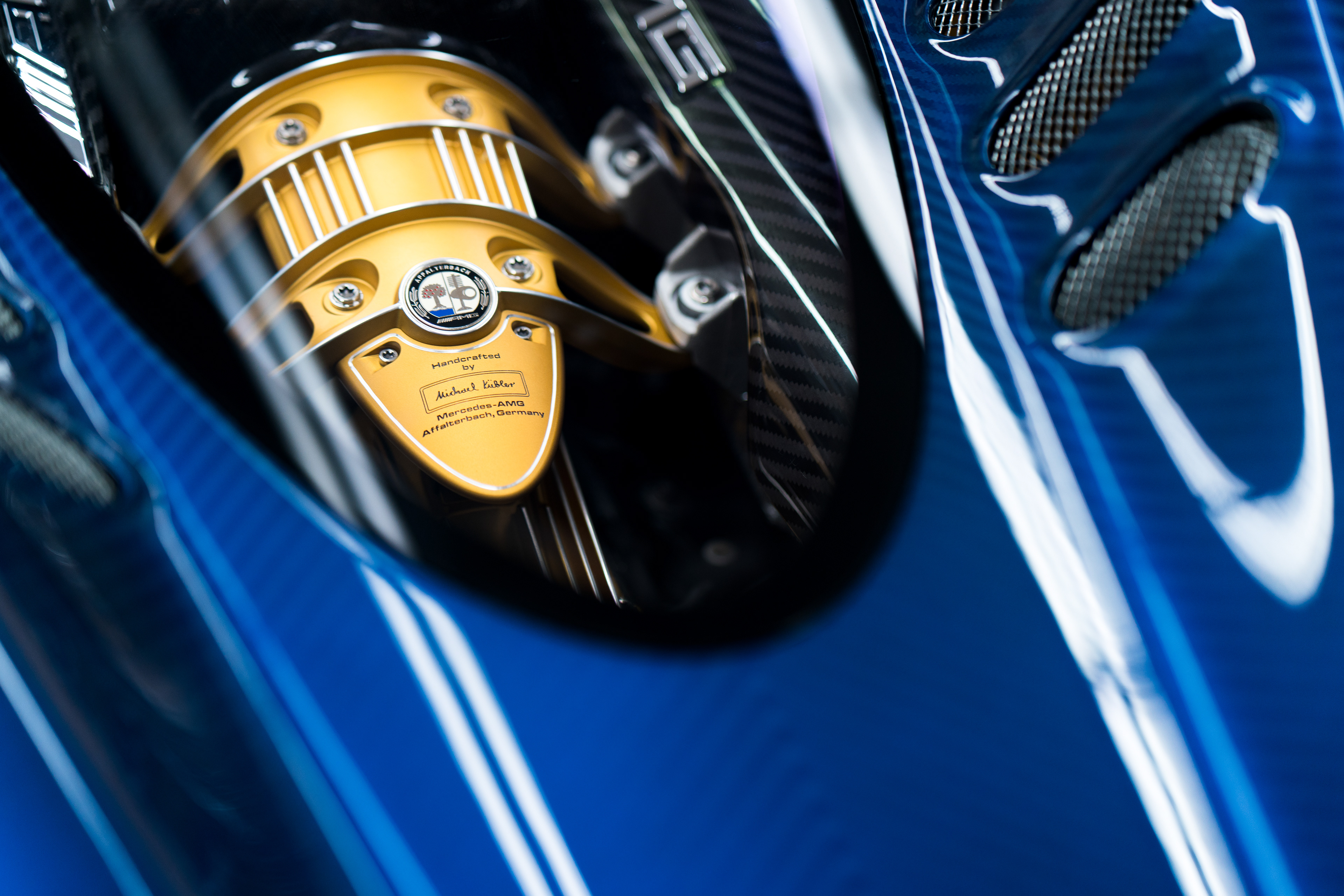Materials created for the Huayra Roadster global reveal.



March 1st, 2017
As the Geneva International Motor Show grows near, my fourth year working with bespoke Italian car manufacturer Pagani Automobili has brought the opportunity to craft launch materials for their newest product. The Huayra Roadster is the third vehicle in the Huayra lineage, and although it is ostensibly the convertible version of their wildly successful Huayra Coupe, Pagani's unique production methodology means the car shares little with its Huayra sisters beyond a badge; rather it is a hybridization which compounds lessons gleaned from both previous iterations. Making less than 50 cars per year entirely by hand, Pagani has unique methods and considerations in manufacturing its cars. That means a whole different set of rules for me, too.
Unlike your typical advertising shoot or long-form product launch which takes place over the course of months, a bespoke car launch is aggressively time sensitive, while at the same time demanding the utmost attention to detail. Vehicle reveals often take place just a handful of days after prototypes are show ready...leaving a fairly tight window to produce creative assets.
Responsibility in creating the materials is doled out differently too. In addition to shooting, I'm also afforded one of my favorite opportunities: collaborating on art direction, in this case directly with the factory's inhouse design team!
In my time spent learning Pagani's story, hearing their ideas, and drawing inspiration from their incredible cars, our dialog has matured to a solid understanding of their creative interests. The brand's founder and principal is widely known to draw his inspiration from the masters of the Italian renaissance. It's a rich palette to command in developing a visual style, and has led me to find inspiration for our work together in the same realm.
Only slightly lesser-known than the headliners of the Italian Renaissance, the works of Caravaggio have always struck a chord with me. His dramatic style of chiaroscuro has influenced generation upon generation of painters, and bears a striking resemblance to modern film & stage lighting techniques. The look I've worked to develop for Pagani is heavily inspired by the tenebroso style he is famed for.
Needless to say, I was happy to hear the mandate come down that our Roadster reveal imagery should be created in this vein. This also meant continuing in the creation of spacious, high resolution imagery which could handle multiformat cropping or a lot of copy, but with enough texture in the negative spaces to sail as a whole frame too.
The reveal imagery was planned to be a composite CG project, combining practical photography with CG elements. That meant shooting a fresh set of backplates to match the gritty urban look explored in the Huayra BC materials. There aren't tons of locations in sunny Southern California reminiscent of New York's dark verticality and selective light, but as a resident of Downtown Los Angeles I thought our iconic Lower Grand Avenue might be a good fit -- slivers of direct light, moody caustic reflections, and some great overhead angles.
Pagani were in agreement. Over the course of two days I conducted a light study and subsequently shot plates on the Phase One medium format system I use for the majority of my work, plus matching HDRI spherical data on a Sony A7R2. The Sony makes a good 'sidearm' to Phase One's CMOS backs since both use Sony Exmor sensors, and the files are easy to color match.
This data was quickly piped back to Italy and paired with approved angles. After some dialog about exact placements everything came back to me in 32-bit colorspace for final post.
I then set about retouching & color work plus a bit of 'exposure painting' to embolden the tenebroso style which ties it all together. For work inspired by the style of another artist I usually keep some of their work nearby or on my second monitor to create a clearer channel for myself. In the case of this overhead angle (below) I picked Caravaggio's Calling of Saint Matthew, and studied its light quality for inspiration.
This was followed up by a trip to the Pagani manufacturing facilities, to shoot details of the completed car.






